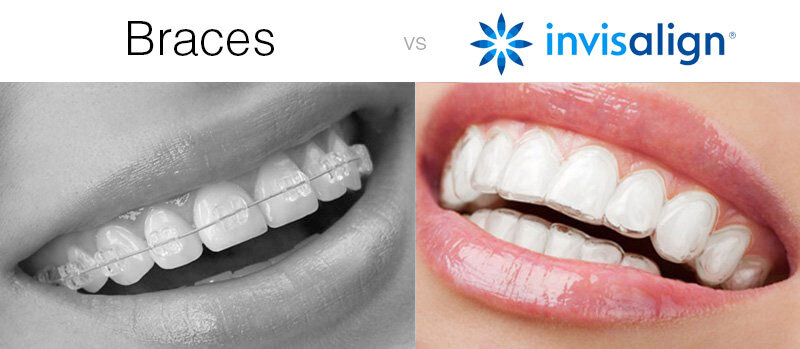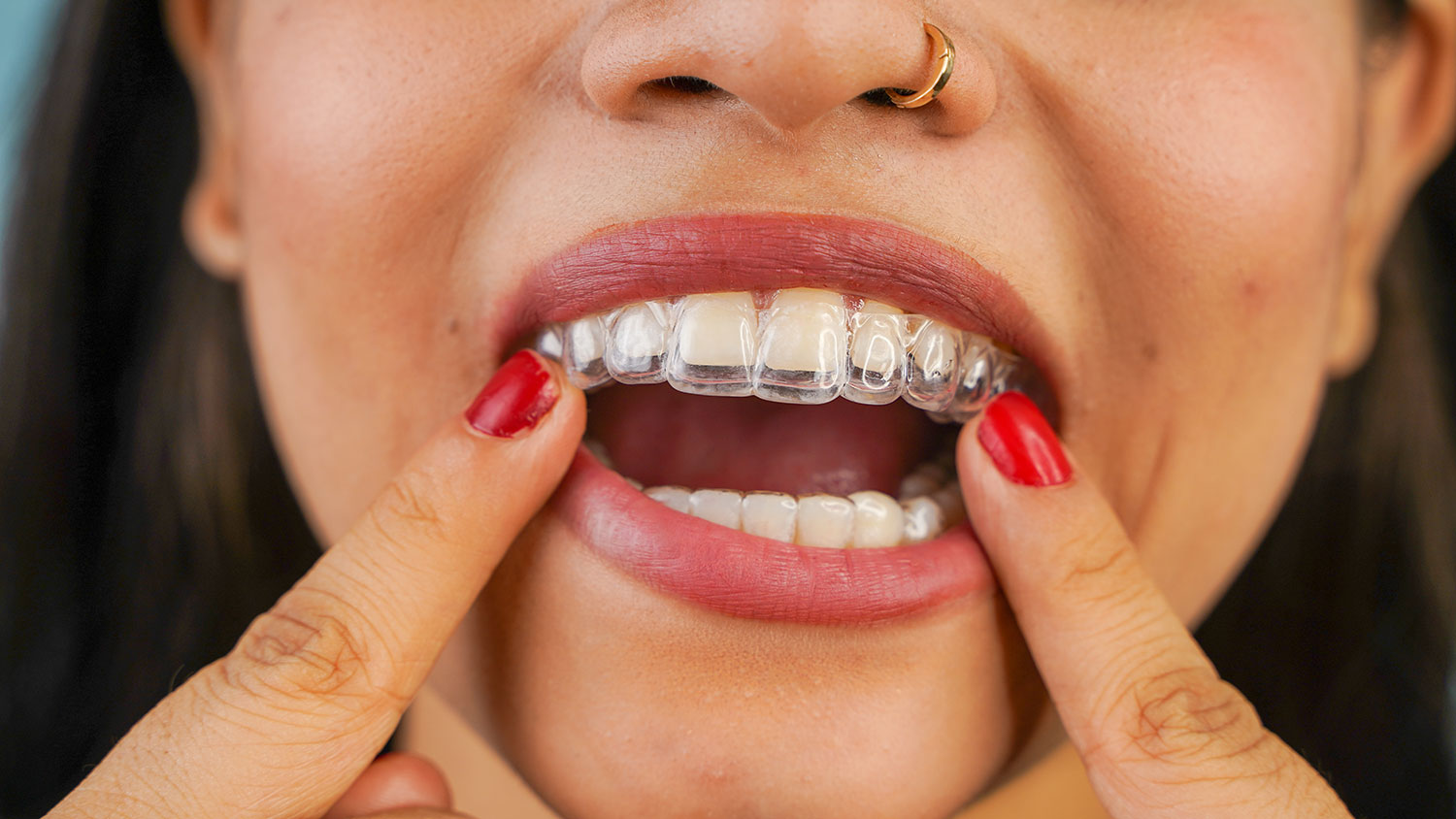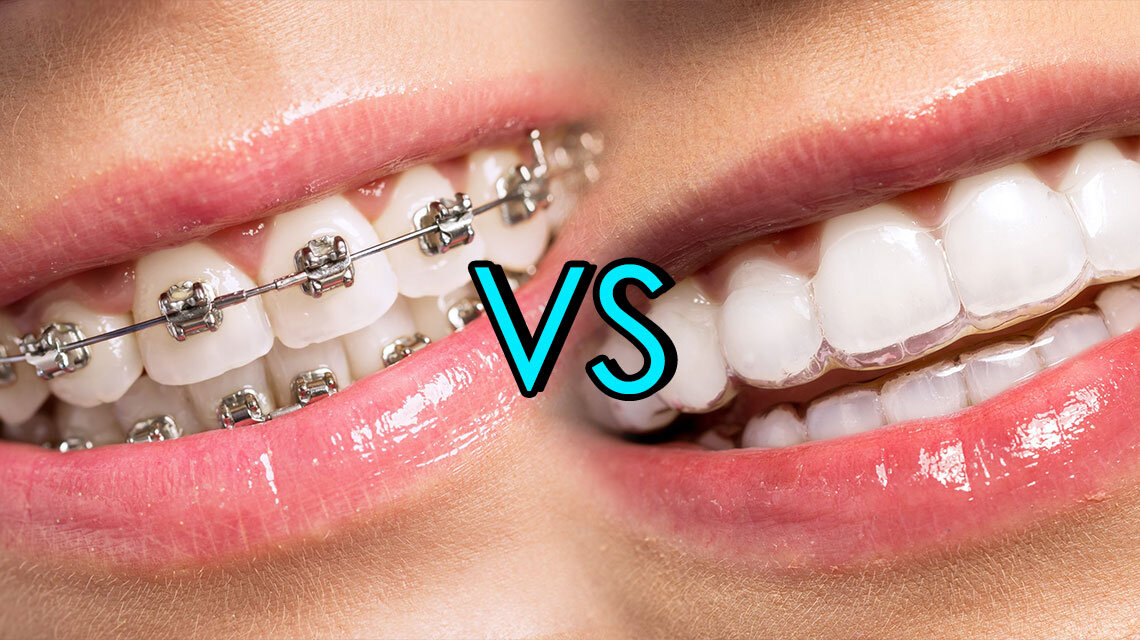Invisalign for Teens: A Modern Solution to Straightening Young Smiles
Invisalign for Teens: A Modern Solution to Straightening Young Smiles
Blog Article
Invisalign vs. Traditional Dental braces: Which Alternative Is Right for You?
When considering orthodontic treatment, the option between Invisalign and traditional dental braces provides several crucial aspects that warrant careful assessment. Invisalign uses a discreet choice with detachable aligners, while standard dental braces give a much more visible yet effective option for extreme imbalance. Each option includes distinctive benefits and drawbacks connected to aesthetic appeals, comfort, therapy period, and price. Understanding these subtleties is essential for making an educated choice that straightens with your individual choices and lifestyle. The inquiry stays: which alternative will best satisfy your orthodontic demands and expectations?
Overview of Treatment Alternatives

In comparison, traditional braces contain steel brackets and cords that are bonded to the teeth. This method applies continuous pressure gradually to accomplish placement. While effective for intricate orthodontic concerns, conventional dental braces call for normal check outs for changes and can posture difficulties in maintaining oral hygiene because of the problem of cleansing about cables and brackets.
Both alternatives have their benefits, and the option typically depends upon particular dental problems, way of life preferences, and client conformity. Ultimately, consulting an orthodontic expert is critical for determining one of the most appropriate treatment strategy customized to specific needs. Understanding the nuances of each choice can considerably influence the total success of orthodontic therapy.
Aesthetic Factors To Consider
A considerable factor influencing the selection in between Invisalign and conventional braces is the aesthetic charm each therapy supplies. Invisalign aligners are crafted from clear plastic, making them basically invisible when used.
In comparison, typical dental braces consist of metal brackets and wires, which can be more recognizable. While improvements in orthodontic innovation have actually brought about the development of smaller sized brackets and colored elastics, conventional dental braces still maintain an even more obvious profile. For some individuals, the visibility of dental braces may hinder them from seeking necessary therapy.
Eventually, the option between Invisalign and traditional dental braces might hinge on individual preferences concerning aesthetics. People who prioritize discernment frequently lean towards Invisalign, while those who are much less worried regarding exposure might decide for traditional dental braces. Recognizing the visual effects of each choice is crucial for making an informed decision that lines up with one's way of living and preferences.
Comfort and Convenience

In terms of benefit, Invisalign aligners are removable, making it possible for individuals to appreciate their preferred foods without restriction and keep optimum dental hygiene. Cleaning and flossing are simplified, as the aligners can be obtained throughout these regimens, whereas typical dental braces require careful steering around wires and brackets.
Additionally, Invisalign's dynamic system permits for fewer orthodontic check outs. People usually obtain numerous sets of aligners at the same time, which can enhance the therapy procedure and minimize time invested in the orthodontist's chair. On the other hand, traditional braces demand normal changes, making them much less convenient for those with hectic routines. Invisalign. On the whole, the convenience and convenience of Invisalign make it an attractive option for numerous people looking for orthodontic therapy.
Treatment Period and Performance
While both Invisalign and conventional dental braces are reliable in dealing with dental misalignments, the duration of therapy can vary substantially in between the 2 options. Typically, Invisalign therapy can take anywhere from 12 to 18 months, depending upon the intricacy of the case. The clear aligners work by progressively changing teeth into their preferred placements, and normal follow-ups with an orthodontist assistance make sure progression remains on the right track.
In contrast, typical braces commonly need a longer dedication, normally varying from 18 months to 3 years. This is due to their set nature and the use of cords and braces, which can be extra efficient for intricate instances and serious misalignments (Invisalign). The treatment effectiveness of traditional braces is well-documented, as they permit precise adjustments and higher control over tooth motion
Ultimately, the option in between Invisalign and conventional braces may rest on both the awaited visit this website treatment duration and the specific dental issues available. Consulting with an orthodontist is essential, as they can provide tailored referrals based on specific needs, guaranteeing the picked technique aligns with wanted results and durations.
Cost Comparison and Insurance Coverage Choices
Price plays a significant duty in the decision-making procedure for people thinking about orthodontic treatment, whether choosing Invisalign or traditional braces. Typically, the expense of Invisalign ranges from $3,000 to $8,000, while typical braces generally cost between $2,000 and $6,000. Factors influencing these expenses include the intricacy of the instance, the period of therapy, and geographical place.
Insurance insurance coverage can dramatically impact out-of-pocket costs. Many oral insurance coverage strategies supply partial insurance coverage for orthodontic therapies, but the specifics can vary widely. It is crucial for patients to review their insurance plan to identify the degree of coverage for either alternative. Usually, standard braces may be much more regularly covered by insurance coverage strategies compared to Invisalign, which some insurance firms classify as an aesthetic treatment.
In addition, a number of orthodontic methods use flexible layaway plan, making both treatment choices extra accessible. Individuals need to ask official source about potential funding options and discounts for ahead of time payments. Assessing the overall cost, consisting of insurance policy benefits and payment strategies, is crucial for making an educated choice that lines up with both aesthetic choices and budget plan considerations.

Conclusion
In recap, the option in between Invisalign and conventional braces rests on several aspects, including aesthetic choices, comfort, treatment duration, and expense. Invisalign offers a very discreet, removable option that promotes dental health and nutritional versatility, while standard dental braces might be a lot more suitable for complicated oral concerns and often come at a lower cost point. Eventually, assessment with an orthodontist is essential to assess individual circumstances and establish the most ideal therapy alternative for attaining optimal oral placement.
When considering orthodontic treatment, the choice in between Invisalign and standard dental braces offers numerous crucial elements that merit careful evaluation.Comparing Invisalign and standard dental braces exposes distinct treatment alternatives for orthodontic adjustment.While both Invisalign and typical braces are efficient in correcting oral imbalances, the period of treatment can differ substantially in between the two choices.Price plays a significant duty in the decision-making process for people taking into consideration orthodontic treatment, whether deciding for Invisalign or traditional dental braces.In wikipedia reference recap, the choice in between Invisalign and standard braces hinges on several elements, consisting of aesthetic choices, comfort, therapy period, and cost.
Report this page